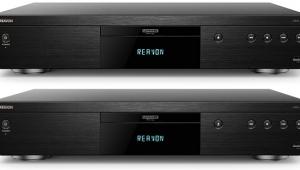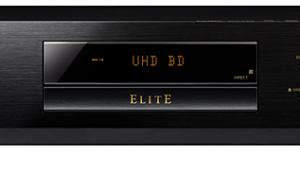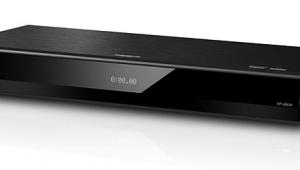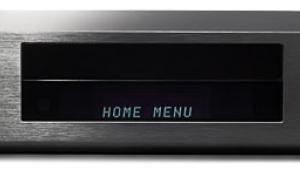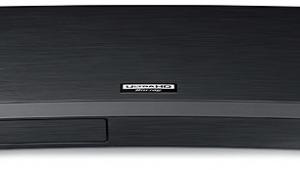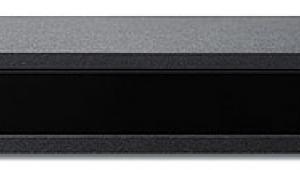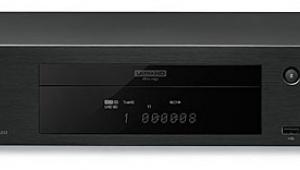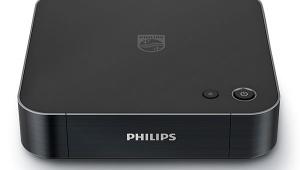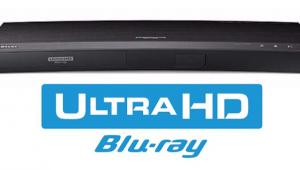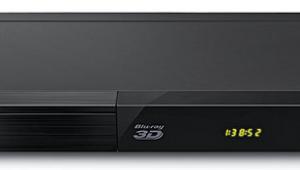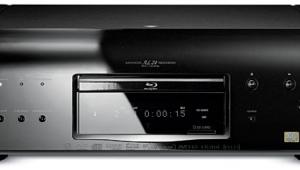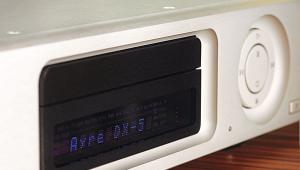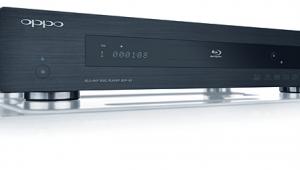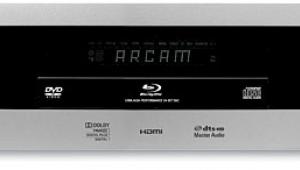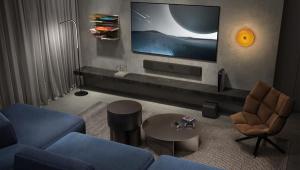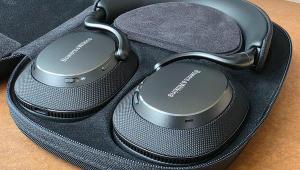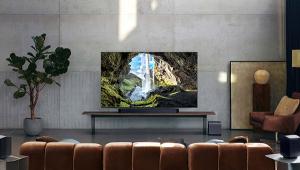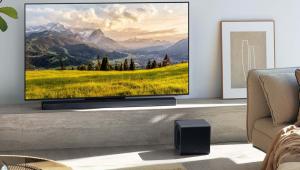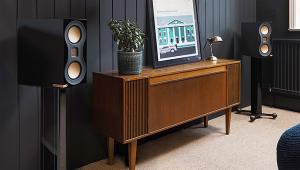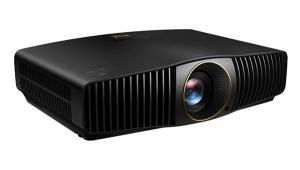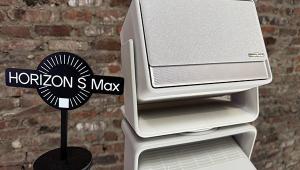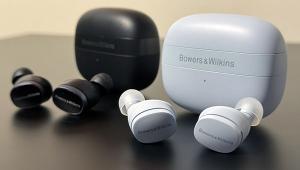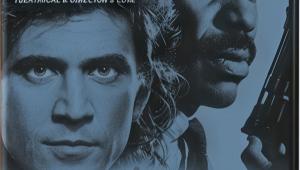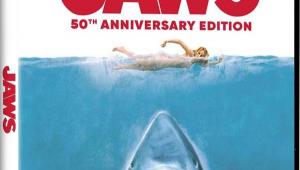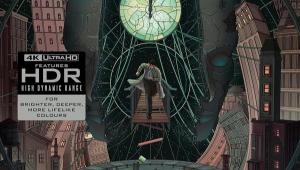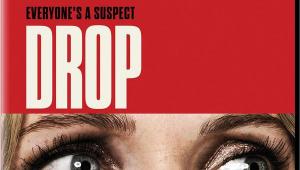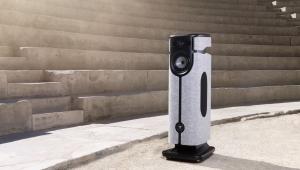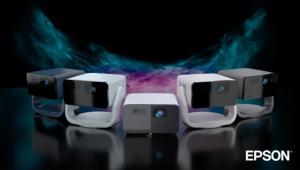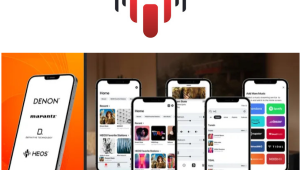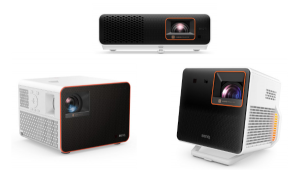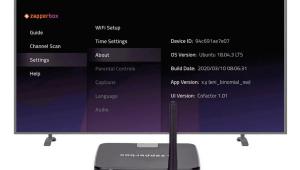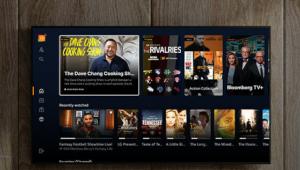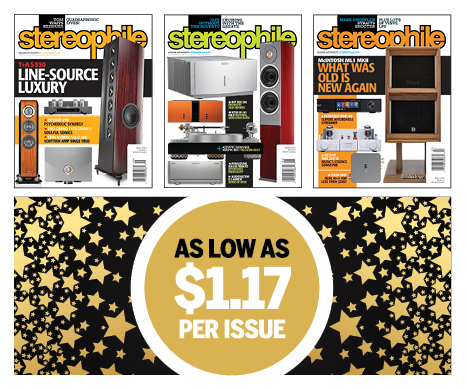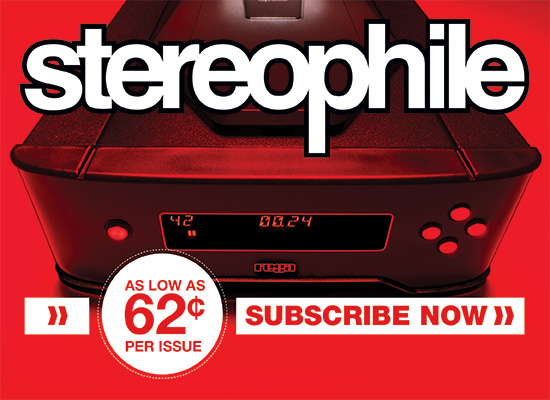Panasonic DMP-UB900 Ultra HD Blu-ray Player

AT A GLANCE
Plus
High-quality upconversion of Blu-rays and DVDs
Effective detail enhancement and noise reduction
Full-featured remote
control
Minus
Doesn’t support YouTube 4K video streaming
No Vudu app
No Dolby Vision disc
support
Pricey next to competition
THE VERDICT
Panasonic’s first Ultra HD Blu-ray player’s excellent performance and solid build quality make it an easy choice for enthusiasts.
Looking back at format launches over the past two decades, it becomes clear that most first-gen players were clunkers, and pricey ones at that. Dig deep through the Sound & Vision archives (on the web, or in your personal print library—you have one of those, right?), and you’ll unearth reviews of the first Blu-ray player, Samsung’s BDP-1000. Priced at $1,000, this ungainly machine took about one minute to load a disc, did quirky stuff (like first converting progressive-scan signals to an interlaced format before outputting them as 1080p), and delivered pictures that looked soft in comparison with those delivered by the HD-DVD format Blu-ray was aggressively warring with at the time.
When the second-gen Blu-ray players rolled out, prices had dropped by nearly half, picture quality issues had cleared up, and disc load times had improved. HD-DVD was still hanging around, but at that point it was “dead man walking.” Stacking up the first generation of Ultra HD Blu-ray players against their Blu-ray forebears, it’s not much of a comparison: The models shipping from Samsung, Philips, and now Panasonic range from reasonably priced to premium, deliver generally excellent picture quality, and are mostly free of operational glitches. The one damning thing that can be said about all of them is that they don’t support forthcoming discs in the Dolby Vision high dynamic range (HDR) format—something that’s anticipated for new players arriving in 2017. Of course, HDR10 support is on tap since that’s a requirement of the Ultra HD Blu-ray spec, in both players and all discs that carry HDR signals.
Of the three Ultra HD Blu-ray players A/V enthusiasts currently have to choose from, Panasonic’s DMP-UB900, recently reduced to $600 from its initial $700 offering, is the most expensive. What does this otherwise unassuming player pack that justifies its higher price? Let’s take a look.
The DMP-UB900 is the first THX-certified Ultra HD Blu-ray player. While this doesn’t necessarily signify an advantage over non-certified players, it does guarantee a typically high baseline performance level. The DMP-UB900 also features the company’s High Precision Chroma Processor, which interpolates native 4:2:0 content on both Ultra HD and regular Blu-ray to a 4:4:4 format. In addition, Panasonic’s player provides linear remapping of HDR content on discs for display on standard dynamic range TVs. For those interested in 3D, the DMP-UB900 can also play Blu-ray 3D discs.

Netflix 4K streaming is supported on the DMP-UB900, andNetflix HDR is now said to be supported as of the unit’s version 1.5 firmware update. Other apps include YouTube, Amazon Instant Video, and Vimeo. Panasonic’s promotional materials for the DMPUB900 say it can stream native 4K content from YouTube, but the 4K clips I checked out all indicated they were being delivered in regular HD format. It turns our that the DMP-UB900’s YouTube app doesn’t actually support this, but a Panasonic engineer told me neither do the YouTube apps on competitive UHD BD players, at least as of early December. Even so, the DMP-UB900 does a good enough job of upconverting streamed content to 4K that most folks won’t be able to tell the difference. Frustratingly, the Panasonic omits Vudu and UltraFlix, the other two streaming apps currently offering 4K.
Panasonic clearly designed this player with audiophiles in mind. While it can’t play SACD or DVD-Audio discs as some universal audio players do, it does support playback of a variety of hi-res audio formats (besides the usual Dolby TrueHD and DTS-HD Master Audio) from attached USB drives or streamed over a wired or wireless network, supported by a 192-kilohertz/32-bit DAC. These include FLAC (up to 192/24, 5.1channel), WAV (192/32, two-channel), ALAC (96/32 up to 7.1-channel or 192/32 in 5.1-channel), and DSD (2.8 megahertz up to 5.1-channel and 5.6 mHz in two-channel). The company says it used high-quality analog circuit components for that part of the audio chain.
In part due to its audiophile intentions, the DMP-UB900 also seriously outdoes its competition when it comes to connectivity. In addition to a pair of HDMI ports (one HDMI 2.0a) on the back panel (configurable for video-plus-audio, video-only, or audioonly output), it also provides 7.1-channel analog, stereo analog, and coaxial and optical digital outputs. There’s also a LAN connection back there. Around front, the aforementioned USB port and SD memory card slot are hidden beneath a flip-down panel next to the disc drawer. I’ve always appreciated the SD card slot Panasonic provides on its players, a unique feature that lets you quickly and easily view photos and videos on your TV that were shot with a digital camera.

